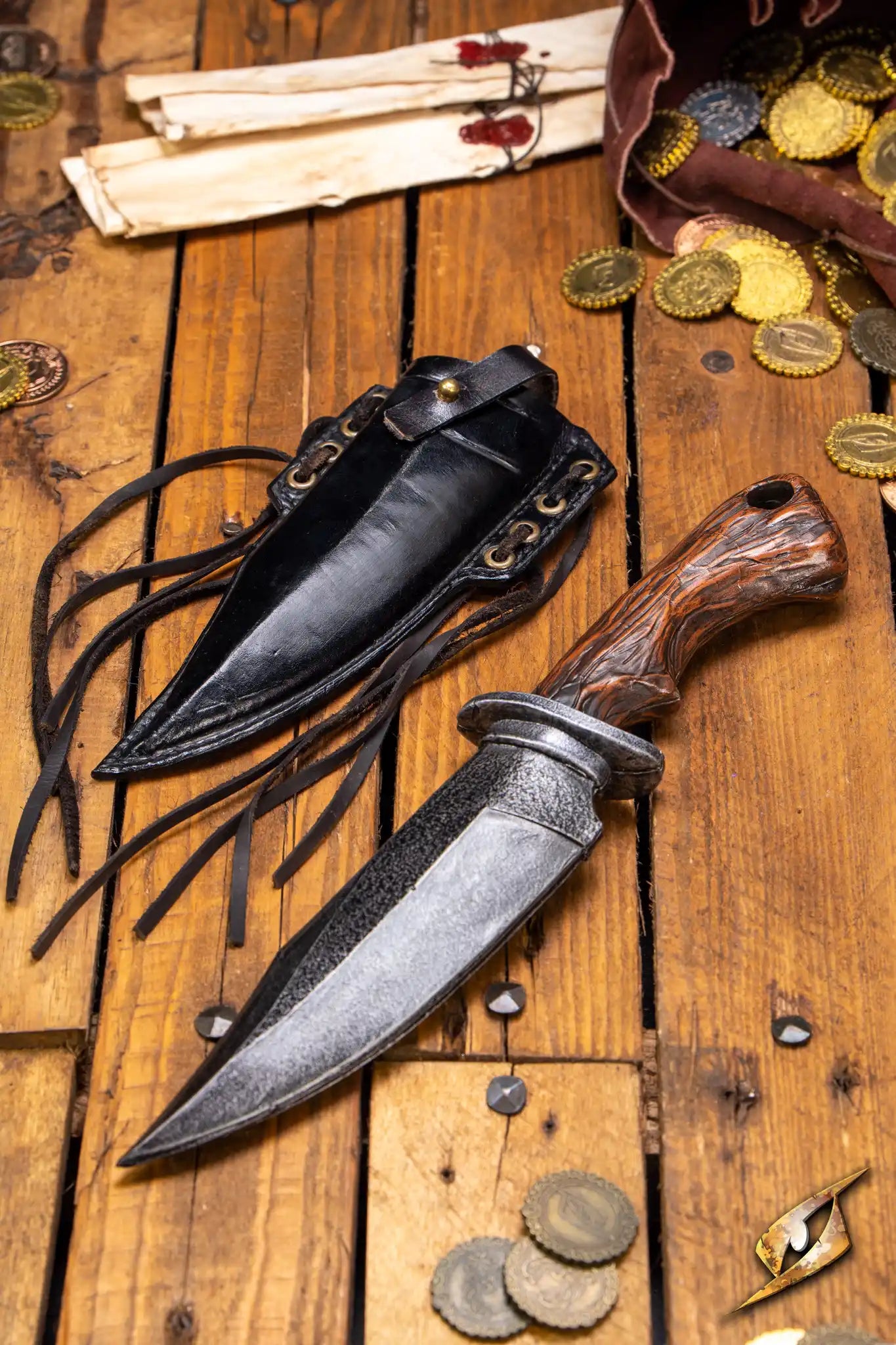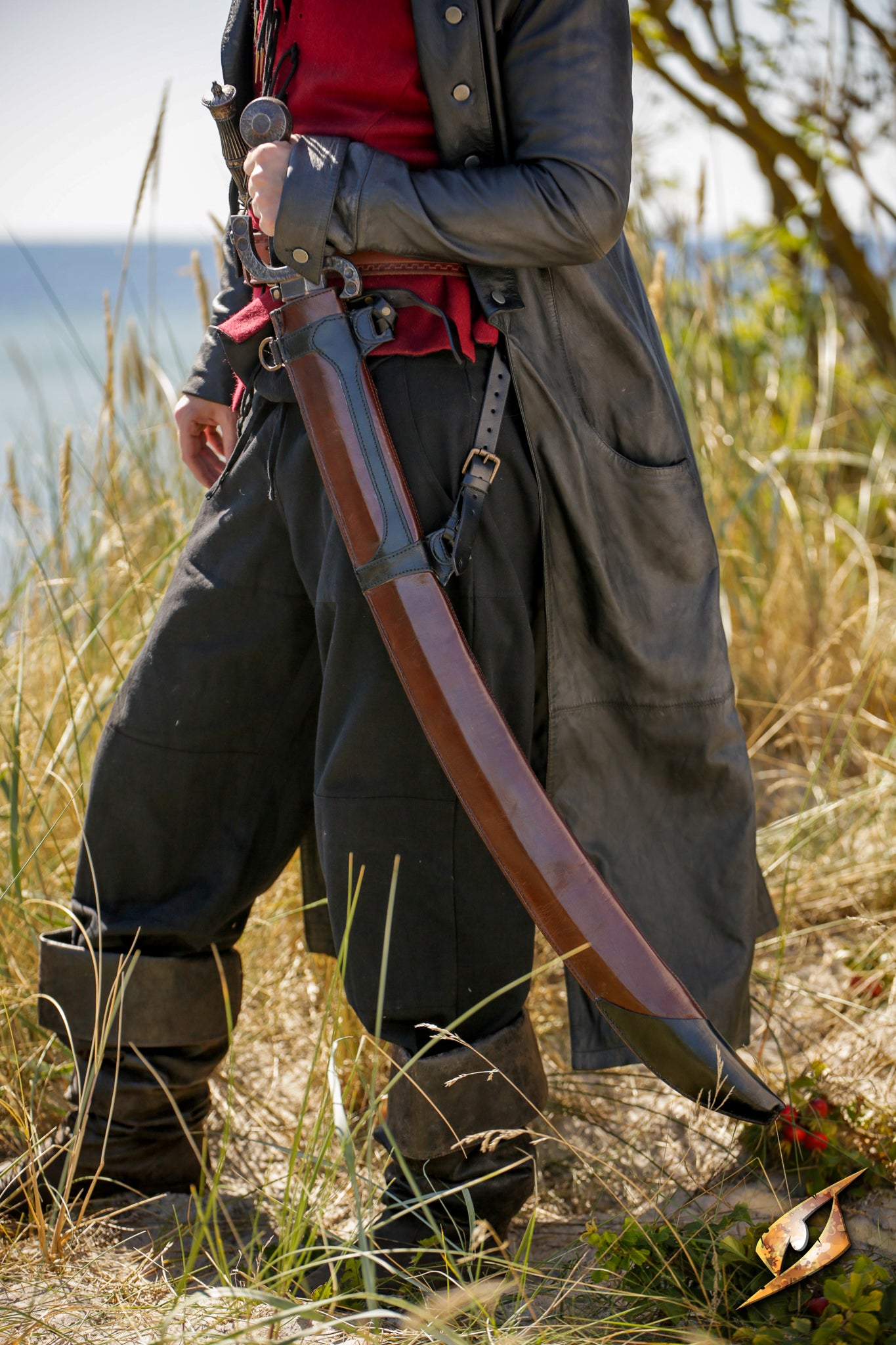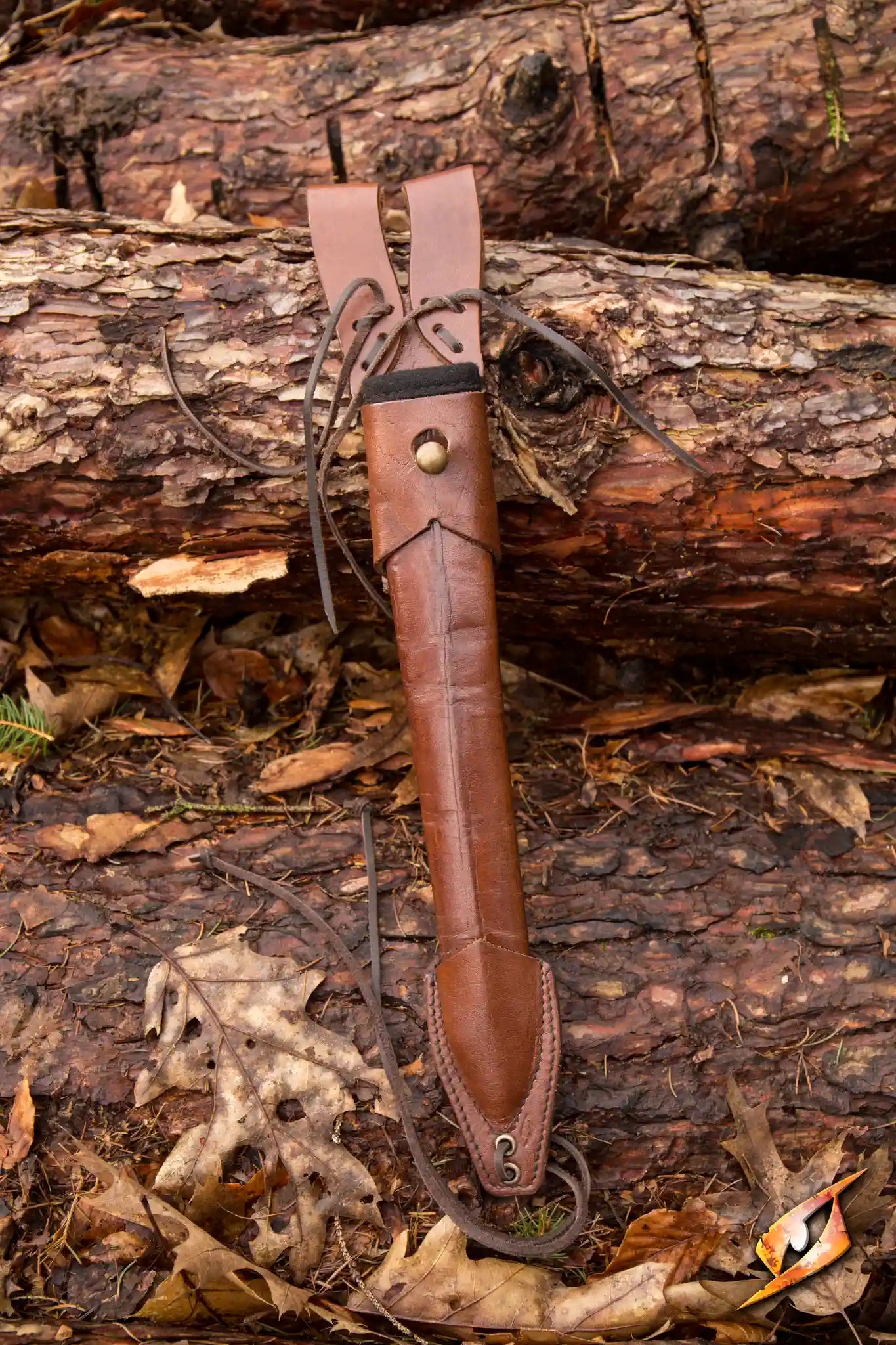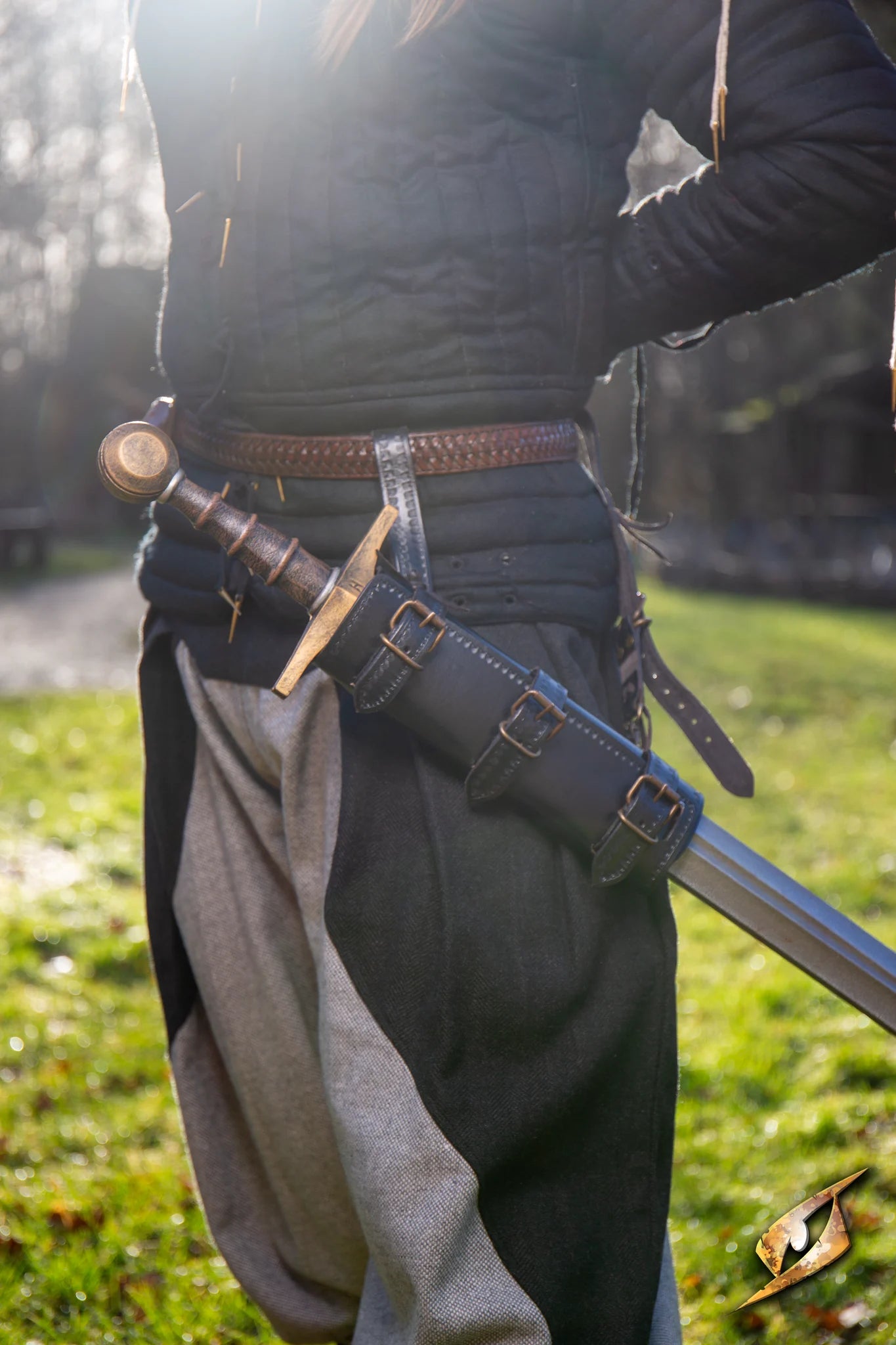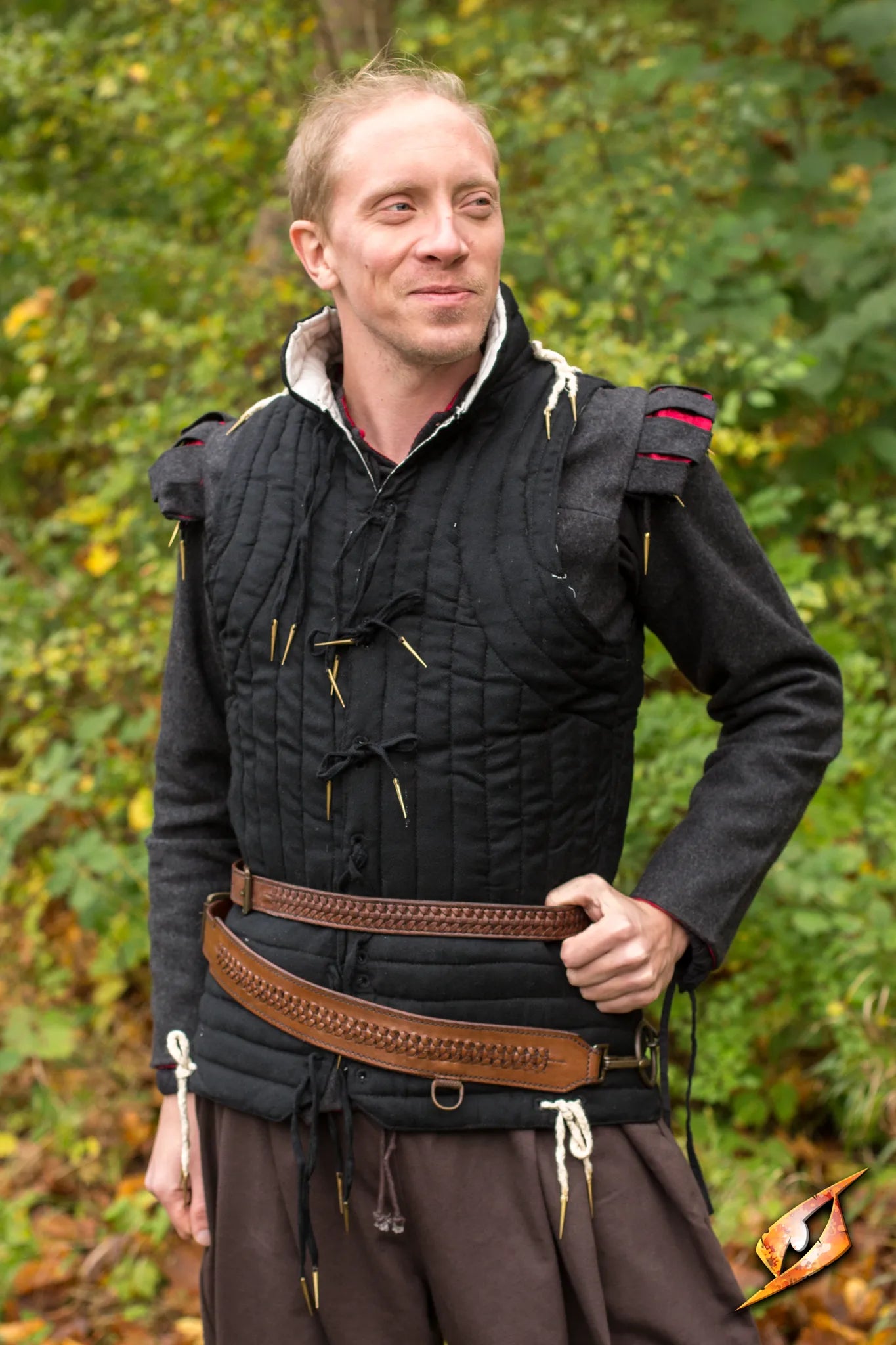Filters
Recently viewed products
Scabbards & Sword Sheaths
A Warrior’s Companion: Scabbards for Every Blade
A sword is more than a weapon—it is a symbol of honor, courage, and destiny. From the whispered tales of an elven blade to the commanding presence of a knight’s longsword, each weapon tells a story. But even the finest blade requires a sanctuary, a home to rest in readiness. Enter the scabbard and sword sheath: the often-overlooked yet indispensable companions to your weapon.
Scabbards and sheaths are more than functional items; they are works of art that protect and elevate your weapon. A finely crafted scabbard ensures your blade is secure, accessible, and perfectly aligned with your character's aesthetic. Whether you are a gallant knight, a cunning rogue, or a battle-worn mercenary, these accessories bring authenticity and practicality to your role.
Our collection of scabbards and sword sheaths caters to LARPers, reenactors, and cosplayers alike. With a wide range of designs, materials, and fits, these carriers are tailored to meet the needs of both function and fantasy. From leather-crafted classics to elaborate designs adorned with intricate details, every piece enhances your story while safeguarding your weapon.
Find the Perfect Sheath for Your Sword
Scabbards and sword sheaths are not merely practical additions—they are storytellers. Your scabbard's style, material, and design say as much about your character as the weapon it carries. A richly adorned scabbard might suggest a noble knight with a storied past, while a rugged and weathered sheath could hint at a wanderer who has seen countless adventures.
Our collection spans a remarkable variety, offering something for every persona and setting. For medieval reenactors, traditional leather scabbards provide a historical touch, crafted with attention to authenticity. Our scabbards are ideal for Larp battles, ceremonial displays, or simply completing the look of a medieval outfit. Fantasy enthusiasts can explore a world of creativity with designs that feature embossed runes, magical motifs, or metallic accents, perfect for complementing an enchanted sword or a relic of untold power.
Cosplayers benefit from versatile, lightweight designs that pair seamlessly with foam weapons. These scabbards and sheaths are easy to wear for extended periods, making them perfect for conventions, performances, and photoshoots. Their aesthetic appeal ensures that every costume detail is polished, allowing the weapon to be as much a visual highlight as a functional prop.
In practical terms, scabbards and sheaths are crucial in keeping your weapon safe and accessible. Adjustable straps allow for personalized wear, whether mounted on a belt, slung over a shoulder, or secured across your back. Materials like durable leather, faux leather, and textile blends ensure long-lasting performance, even in the most demanding environments. The variety of sizes and designs means there is a perfect match for every blade, from small daggers to imposing greatswords.
Whether you seek something ornate to match a ceremonial blade or something rugged for a roving adventurer, our scabbards and sword sheaths offer the perfect combination of function and flair. Each piece is crafted to enhance both your character and your experience.
Secure, Durable, and Designed for Adventure
The primary purpose of a scabbard or sheath is to provide protection, but the benefits go far beyond mere functionality. A well-designed scabbard is a seamless blend of practicality and artistry, ensuring your weapon is secure and an extension of your character.
Unmatched Protection and Security: Each scabbard and sheath is crafted to hold your weapon snugly, preventing unnecessary movement that could cause wear or damage. This protection for foam weapons used in LARP ensures the blade remains pristine and ready for the next encounter. Steel and resin weapons benefit from the added safety during transport and storage, making these carriers essential for any roleplay enthusiast.
Comfort and Customization: Wearing a scabbard or sheath should never hinder your movement or immersion. That’s why our designs include adjustable straps, ergonomic fittings, and versatile attachment options. Whether you prefer your weapon at your hip, across your back, or secured to a belt, these carriers ensure maximum comfort while keeping your weapon within reach.
Durability for the Journey Ahead: Roleplay events are not kind to gear. From running through dense forests to engaging in mock battles, your equipment must withstand rigorous use. Our scabbards and sheaths are made from high-quality materials, including reinforced leather and heavy-duty textiles, designed to endure the toughest challenges. Every stitch, clasp, and fastening is tested for durability, ensuring these items remain dependable through years of adventures.
Aesthetic Versatility: Beyond their practical benefits, scabbards and sheaths are visual enhancements that complete the look of any costume. Ornate designs with intricate patterns or metallic embellishments add sophistication, while minimalist and rugged styles convey practicality and resilience. These accessories can complement any character, be it a high-ranking officer in an imperial army or a solitary wanderer seeking their destiny.
Adaptability Across Characters: One of the most valuable features of our scabbards and sword sheaths is their adaptability. A single piece can transition between characters and events, serving as a knight’s ceremonial scabbard one day and a rogue’s inconspicuous sheath the next. This versatility allows you to maximize the value of your gear while exploring new roles and stories.
Every Scabbard Tells a Story
Scabbards and sword sheaths as a part of your ensemble, can help tell the story your portraying. Whether looking at a pristine noble scabbard for Noble Lord or a simple sheath for peasant conscripted for war.
Imagine a knight stepping onto the battlefield. Their sword sheathed in a scabbard engraved with their family crest. As they draw the blade in one fluid motion, the sound of steel against leather reverberates—a moment of quiet before the chaos of combat begins. The scabbard, worn but polished, tells a tale of generations who have wielded this weapon in defense of their honor.
In a darkened alley, a rogue checks the position of their dagger sheath, ensuring it is hidden yet accessible. The sheath’s simplicity reflects the rogue’s need for discretion, but its placement hints at a lifetime of practice and precision. A single move could spell the difference between success and failure in the dangerous world of subterfuge.
Across a rugged wilderness, an adventurer secures their longsword in a scabbard scarred from countless trials. Every notch and scratch speaks of battles fought and lessons learned. As they tighten the strap on their belt, the weight of the weapon is a reassuring presence—a reminder that they are ready for whatever lies ahead.
For cosplayers, a beautifully designed sword sheath adds authenticity and dynamic flair to every costume. Whether posing for photos, performing on stage, or simply walking the convention floor, the right scabbard elevates the entire ensemble. It’s not just an accessory; it’s a statement of character and creativity.
These use cases highlight the importance of scabbards and sword sheaths in bringing characters to life. They are not just practical items but narrative tools that enhance immersion and create unforgettable moments.
Carry Your Blade in Style
Equip yourself with a scabbard or sword sheath that complements your blade and completes your look. Whether you’re stepping into the chaos of battle, the shadows of intrigue, or the spotlight of a stage, these accessories ensure your weapon is always ready when the story demands it. Explore our collection today, and carry your blade with style, confidence, and purpose—adventure awaits!

